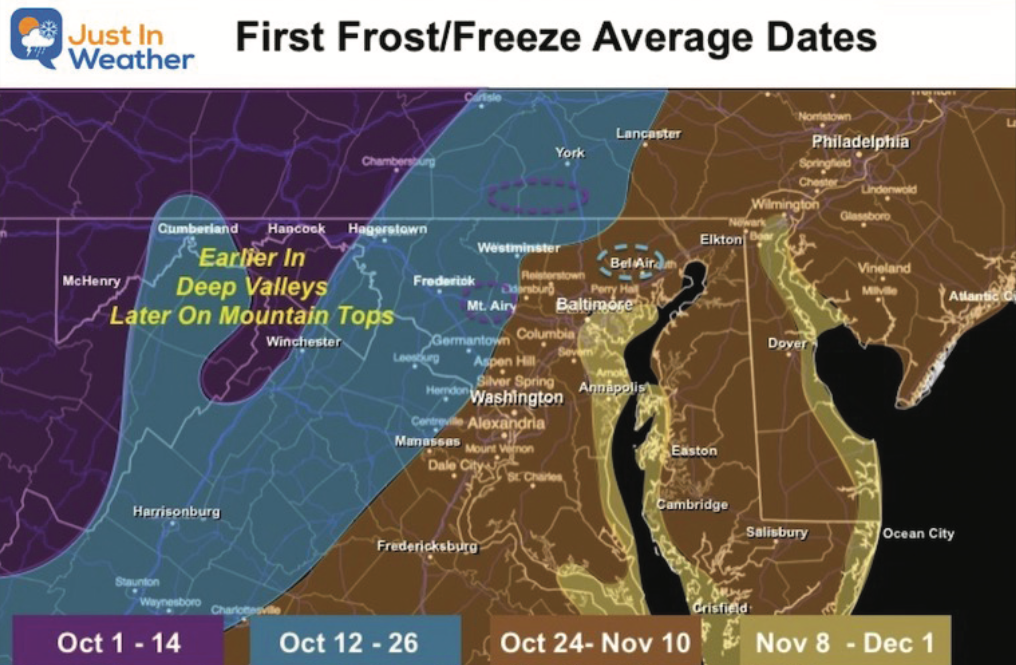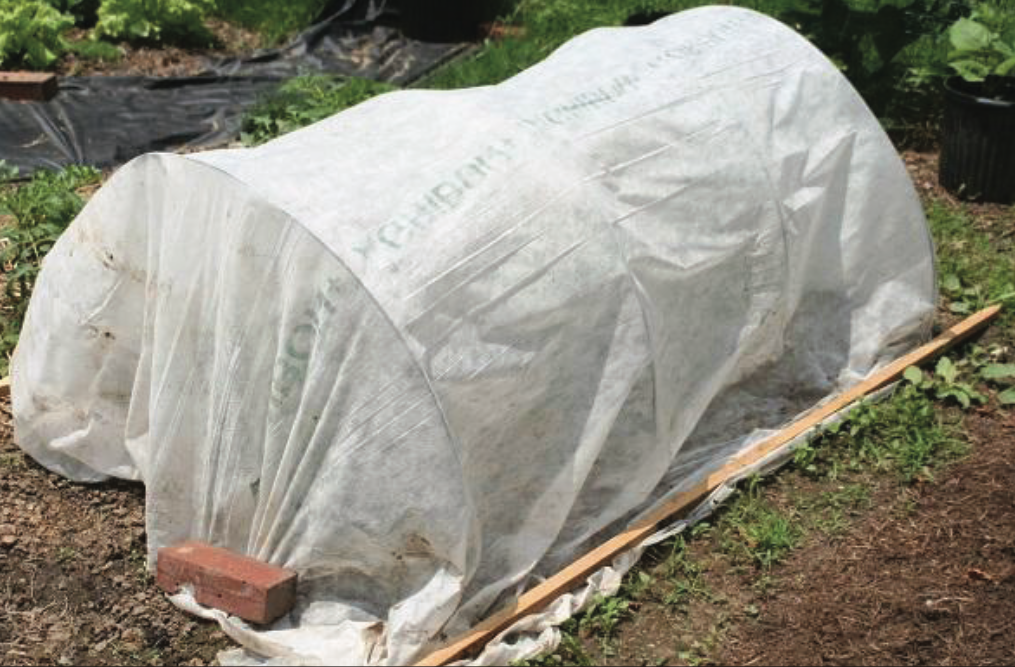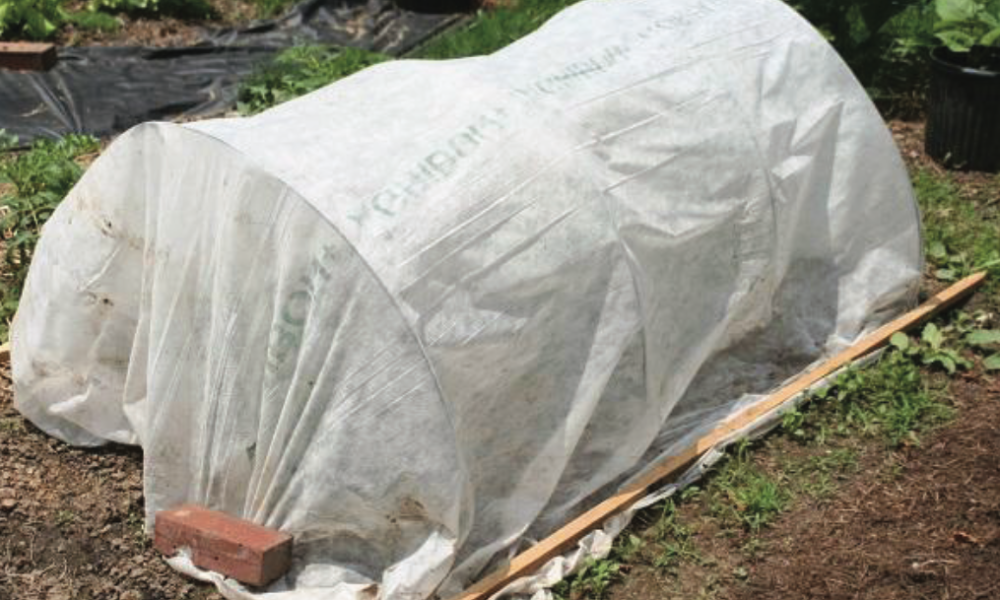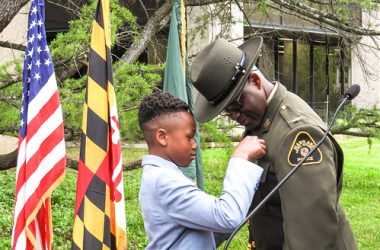by Kate Shunney
Weather is on everyone’ s mind this week as Hurricane Ian brings his big gusty, wet energy up through Florida and along the coast.
Even though warm waters fuel the hurricane season, underway now, local residents are preparing for what the cooler weather brings – the first frost and freeze.
The shape of the land plays a big part in when residents will wake up to frosty fields and lawns.
Areas in and between mountains have their own timeframe for fall freezing because air moves differently between ridges and valleys.
“[S]ome areas with varied terrain can have a wide range of first frost dates since warmer air holds on hill tops and cold air sinks in valleys on long autumn nights,” reports Justin Berk in his weather prediction for this year’s frost arrival.
Areas near large water sources may find that frost comes later than inland spots, as rivers, bays and oceans are a source of atmospheric heat, acting as a kind of buffer against the cold.
It’ s likely the first frost in Hancock and Southern Fulton will appear this week or next, as morning and evening temperatures are steadily moving downward.
Berk reports that the first frost/freeze in Hancock has been recorded between October 6 and October 21 most often in the last 10 years. In a rare year, the first frost appeared by September 21.

The University of Maryland Extension Service says residents can pinpoint first frost data by entering their location or zip code into the app from the National Gardening Association. It will generate a chart showing historical data. The National Oceanic and Atmospheric Administration (NOAA) also has climate data for historical perspective.
First frost doesn’ t just affect what the kids will wear to school in the morning, or if you’ ll need to pull that hoodie out of the closet for an evening walk.
Farmers, gardeners and plant-lovers monitor the frost and its effect on crops and seasonal plants.
“The University of Maryland points out that cold temperatures will improve the flavor and texture of kale, collards, cabbage, and turnip greens. But bringing tender annual flowers like geranium and begonia indoors before the first frost will help you keep them growing indoors through the winter. Larger pots and in ground vegetation can be protected with a tarp or garbage bags to hold in the heat and give you a little extra growing time,” writes Berk of JustinWeather.com.
For home gardeners, freezing temperatures will put an end to some harvests.
“Very tender annual plants like basil, tomato, cucumber, pepper, zinnias, and marigolds are damaged or killed by freezing temperature. Plan to gather your final harvest before the first significant frost. Pumpkins, winter squash, white potatoes, and sweet potatoes can also be injured by a heavy frost,” Extension experts say.
It’ s time for gardeners to act quickly if they want to extend the growing or garden season beyond the start of frosty mornings and freezing evenings.
Row covers can be added over garden crops to add a few degrees of warmth around plants.
A row cover is generally some kind of fabric draped over frames, enclosing the inground plants.

photo courtesy of University of Maryland Extenion
Row covers are usually woven fabric, often synthetic, that lets sunlight and water through to reach the plants.
There are different weight fabrics available to add a little protection or the highest. Heavyweight row covers can give plants another eight degrees of warmth, say garden experts.
Row covers are usually draped over simple frames made of wood, plastic pipe or wire that keep the fabric up off the plants themselves. The fabric will need to be secured to ground – with bricks, boards or rocks – to get the most temperature protection.
For guidance on how to use row covers or prepare a home garden for winter, contact the Washington County office of the University of Maryland Extension by calling 301-791-1304 or emailing Amy Simmons at simmons@ umd.edu. In Allegany County, contact Jody Parrish at 301-724-3320 or by emailing [email protected].




